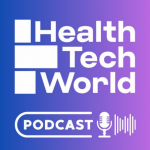
Dr Ameera Patel, CEO of TidalSense, an AI respiratory healthtech pioneer for COPD and asthma solutions, walks through some of the most significant developments in the world of respiratory health over the past 12 months and considers the prognosis for 2024…
From a health perspective, the story of 2023 is one of stark juxtaposition.
The first full year of ‘normal’ since 2019 saw people eagerly shedding Covid-era precautions and returning to their longstanding habits and behaviours while our health services grappled with the aftermath of the pandemic.
In respiratory health, it’s been a year in which the true extent of diagnostic system failure has been laid bare.
The UK has the worst respiratory death rates in Western Europe, and based on the evidence of the past 12 months, there’s a real risk that the situation will deteriorate further.
Urgent action – and, crucially, new thinking – is needed from NHS decision-makers to reverse the trend.
However, on this front, I feel optimistic that the tide may be turning.
So, as I look back on 2023, here are a few of the major respiratory health developments that particularly caught my attention.
The year that post-pandemic behaviours normalised
Characterise the difference between this year and last in one distinct image, and it’s the presence of face masks in everyday life.
Although the worst of the pandemic was over by spring 2022, high levels of mask-wearing persisted throughout the year, limiting the spread of respiratory illnesses.
In 2023, however, people seemed to forget about respiratory illness altogether, despite the lingering presence of Covid, the waning of vaccines, and the resurgence of colds and flus.
Masks were out; public transport, hospitality and live events were back in.
Consequently, the UK Health Security Agency has reported a significant increase in non-COVID-19 respiratory infections compared to 2022
The year that respiratory diagnostics collapsed
People’s behaviours may have recovered, but the NHS has not, and the backlog in respiratory diagnostics has become a source of growing exasperation amongst GPs.
12 months ago, Asthma & Lung UK put out startling new data showing that almost one-quarter of people with suspected chronic obstructive pulmonary disease (COPD) were waiting up to five years for diagnostic tests, with one in eight patients waiting up to ten years.
The conventional COPD test, spirometry, is a 180-year-old technique that leaves much to be desired, yet the current system failure is so acute that a large proportion of GPs can’t even access spirometry.
In fact nearly one in four people with COPD- have waited more than five years to be diagnosed.
The only positive is that this failure appears to have triggered a change in thinking across Integrated Care Boards.
Commissioners have started to examine new diagnostic technologies that GPs can access with ease and speed, and this is one area where I expect to see significant progress in 2024, with more trials commissioned, and successful trials quickly transitioning into full-scale deployments.
The year that we noticed the illegal air pollution surrounding our schools
Air pollution has a pronounced impact on respiratory health, particularly among children whose lungs are still developing.
So it was highly concerning to see research showing that 99.8 per cent of schools in England are in areas that exceed the World Health Organization’s (WHO) recommended limits for Particulate Matter 2.5, while two in five schools in the most polluted parts of England are exposed to dangerously high levels of NO2.
With road traffic levels now fully restored to pre-pandemic levels, this data needs to serve as a wake-up call for local and central governments.
Action will be required in 2024 to reduce air pollution levels and protect our children.
It’s another area in which respiratory diagnostic innovation needs to be embraced by the NHS, given the limitations of using spirometry for under-16s.
The year of runaway recreational inhaled substance use
The WHO recently issued a call-out to governments to treat e-cigarettes similarly to tobacco use and ban the sale of flavoured vapes.
This is a nuanced topic given the evidence that e-cigarettes reduce deaths and illness caused by smoking tobacco, but it’s hard to ignore data showing that in the UK, one-fifth of children aged 11-17 tried vaping in 2023, up from 15.8 per cent in 2022.
The UK Government launched a consultation on vaping in October, alongside unexpected plans to phase out the sale of cigarettes, however, the febrile political climate and imminent General Election leaves few guarantees that these positive noises will translate into lasting policy.
Regardless, one thing I want to see in the year ahead is proactive health campaigning to improve young people’s awareness of lung health and encourage them to think differently about the risks of vaping, as well as recreational drug use.
There’s still a lack of evidence about the long-term health impact of vaping amongst young people, but there’s thought to be significant risk factors between recreational drug use, including cocaine, heroin and cannabis – and the early onset of respiratory disease.
The year of (Gen)AI proliferation… and irresponsible AI
Like every other industry, there’s been a vast proliferation of Generative AI (GenAI) applications in healthcare over the past 12 months. It’s a case of the good, the bad and the ugly.
Undoubtedly, AI, if used responsibly, has huge potential to transform patient care.
However, alongside legitimate, regulated uses of AI in healthcare environments, we’re also seeing myriad illegal medical device applications – such as symptom-checking applications showing up online.
An issue which often stems from a general lack of awareness among some developers regarding medical device regulations.
At best, these apps will have negligible impact; at worst, they’ll actively result in patient harm.
The newly created EU AI Act places all medical devices as extremely high risk, and so I’m hopeful that 2024 will force medical device manufacturers and App Store gatekeepers to tighten up their act.
In parallel, the MHRA’s introduction of the AI-Airlock initiative, a regulatory sandbox poised for a 2024 launch, is set to expedite the access of regulated AI technologies in healthcare.
It’s also worth reminding ourselves that AI is not a universal health panacea, and more time must also be spent on addressing the root causes of respiratory diseases like COPD, rather than solely relying on technological solutions.
We all have lungs and there’s only so much AI can do to protect them.




